Our recent State of AI 28% of marketers who don’t use AI in their roles say it’s because generative AI tools are too expensive. This makes sense because, as a good marketer, you should be skeptical about high-priced tech, especially with emerging technology.
But, at the same time, there are many affordable AI tools that can help you save time and meet your marketing goals. And, for what it’s worth, 60% of marketers in the same survey also reported that AI/automation tools are important in their day-to-day roles.

In this piece, we’ll share a list of free AI tools, outline the three-step process for implementing AI on a budget, and share how marketers currently leverage AI tools in their roles.
Table of Contents
Affordable AI Tools for Business
Even though marketers who responded to our survey say that they’ve not yet adopted AI because of the price, also consider that all survey respondents who use AI/automation tools say it saves an average of two hours and 24 minutes per day.
Watch on YouTube
Here’s a list of affordable and free AI tools to consider adopting into your marketing processes.
1. HubSpot
Price: Free CRM; Plans start at $50 per month and vary based on team size and tier subscription tier.
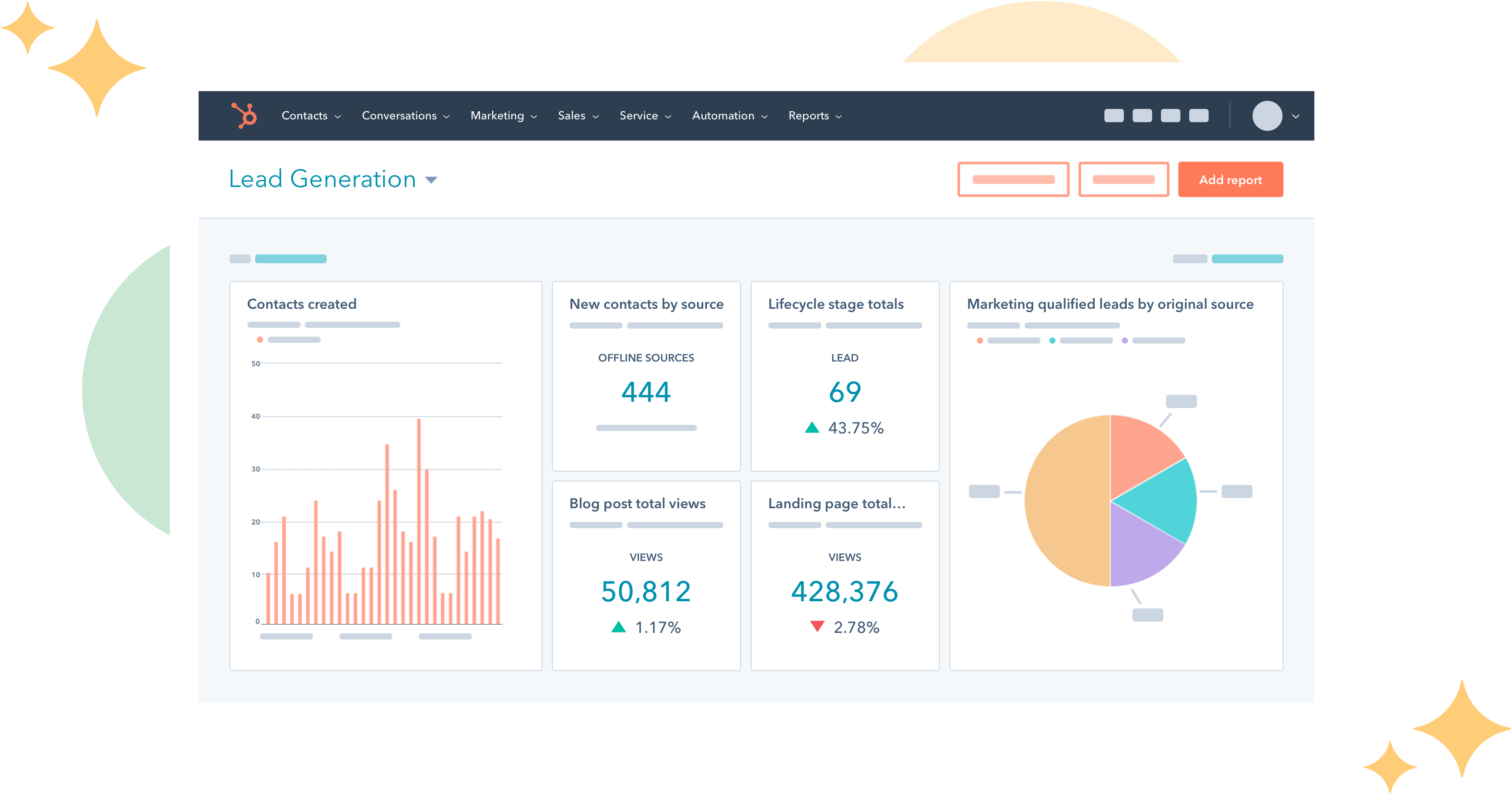
HubSpot incorporates AI in a number of ways. Here are just a few:
- Content Creation: Content Assistant uses generative AI to help you create outlines, emails, and even blog ideas so you can share high-quality content with your audiences.
- SEO: HubSpot’s COS and CMS use algorithms to scour your posts for search optimization suggestions before you post.
- Emails and Workflows: When a customer does something such as engage with an email or landing page, this will trigger a canned email to be sent to them with their name and other personalizations in it.
- Social Media: HubSpot’s social media platform allows you to autogenerate post caption copy using machine learning. This technology recognizes sentences that you might regularly tweet or meta descriptions in a link you’re sharing, then crafts a caption that you can then edit or tweak.
- Deduplication features: If you upload a new list into a HubSpot CRM, or a pre-existing contact subscribes to your marketing newsletter, HubSpot will search the CRM to find matching contacts and prevent any duplicates from being added.
2. Grammarly
Price: Free; Paid plans $12/mo – $15/mo per member
Grammarly is an intuitive copy-editing tool that uses machine learning to recognize and highlight spelling, grammar, and other phrasing errors on platforms like Google Docs, email, and social media sites.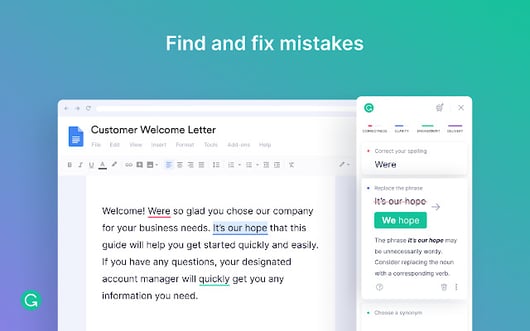
Image Source
As an individual user, Grammarly tracks your writing performance, gives edit suggestions based on your writing experience, and sends you emails that show where you’re excelling and areas for improvement.
Grammarly’s tone detection tool is a high-quality feature that recognizes the tone of your writing For example, if you’re writing an email with “Thank you” in it, Grammarly will note that your message sounds “appreciative,” or “optimistic.”
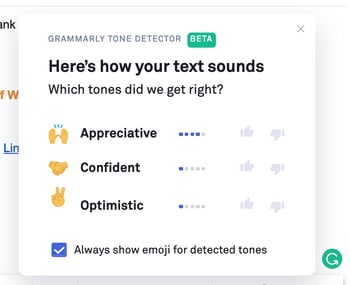
Pro Tip
Grammarly’s team version unlocks customizable editing features that allow the software to make suggestions with your company’s writing styles and branded words in mind.
To learn more about Grammarly and other productivity tools, check out this blog post.
3. ChatGPT
Price: Free; ChatGPT Plus $20/month
ChatGPT is OpenAI’s conversational chatbot, meaning you can reply to its responses and have a conversation to get all the information you need. It uses natural language processing (GPT-3, GPT-3.5, and GPT-4 Beta language models) to understand prompts and provide original, detailed, and accurate responses.
You can use the tool to get inspiration or produce content like blog posts or marketing emails. The image below is an example of a marketing email I asked it to create for a product announcement.
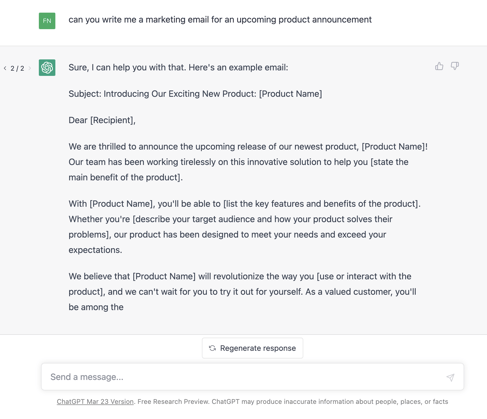
You can also use ChatGPT Plugins (waitlist here) that connect to third-party applications to help you get the best use of the tool for your needs.
Pro Tip
OpenAI’s Chat API lets you build applications using GPT-3.5-turbo and GPT-4 or integrate the tools with your existing applications and products. You can find API pricing here. It also hosts two plugins for web browsing (in beta), a code interpreter for Python, and a knowledge-base retrieval plugin available through open-source code.
4. Frase.io
Price: $14.99/mo (solo) – $114.99/mo for 3 seats
Frase.io is an AI-powered research assistant and question-answering bot helps you optimize articles and other content for SEO by reading your text, comparing it with similar online content, and offering search and keyword-based suggestions.
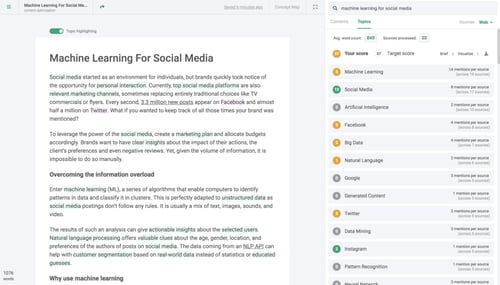
Image Source
Frase.io also has a bot feature that site visitors can use to locate content on your site by simply typing a question into the message box.It uses machine learning to understand phrases and match the words with content or pages related to those words.
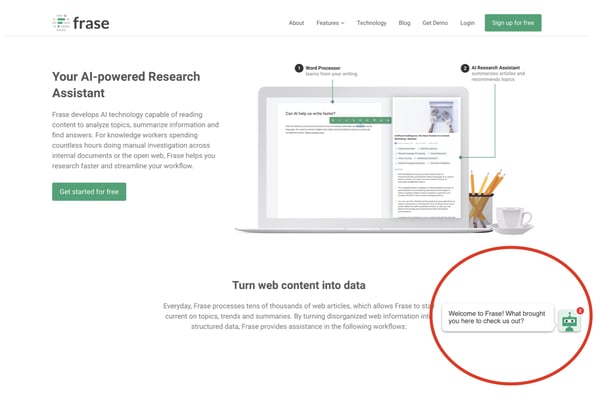
Image Source
Pro Tip
Battling writer’s block? Frase.io can help with that. It offers a number of tools that create content automatically — such as its Blog Introduction Tool, which automatically generates a 100-word introduction for your blog title.
5. DALL-E 2
Price: $15 for 115 credits (requires account)
DALL-E 2 is OpenAI’s advanced image generator that creates original, detailed, realistic images based on an input prompt. Simply describe what you want to create or upload an existing image, and you’ll get a batch to choose from.
It can also expand on existing images, like in the example below, where it added a background of the same style and construction to the famous Girl with a Pearl Earring by Johannes Vermeer.

Image Source
Pro Tip
DALL-E API is available in public beta, so developers can integrate the tool directly into your apps and products for easy and seamless use.
6. Google Analytics
Price: Free; contact sales for Analytics 360 enterprise pricing
You’ve probably heard of or already use Google Analytics. Its machine learning capabilities will answer questions about your website data, give in-depth insights into your site performance, and view the data you need to inform your strategies.
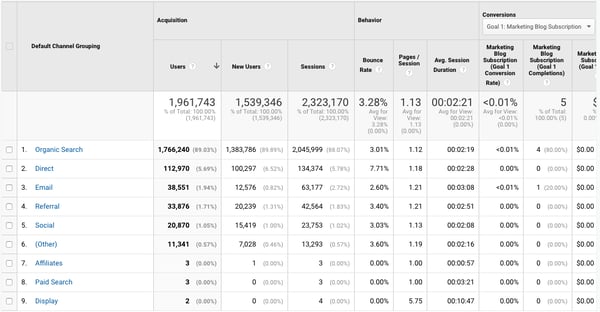
To learn more about this platform and how to get started on it, check out this ultimate guide.
Pro Tip
On top of giving you detailed insights into how your website is doing, GA also integrates with all of Google’s marketing products — including Google Ads, Search Console, and Data Studio.
6. Bing Chat
Price: Free (Bing Chat requires Microsoft Edge)
Microsoft’s Bing Chat is a conversational tool that responds to prompts with accurate answers. It offers two high-quality options for marketers: image creation and content composer.
The compose feature can create entire blog posts or single paragraphs, emails, social media captions, or simply give you content inspiration. You can select your preferred tone, send a prompt, and get started easily.
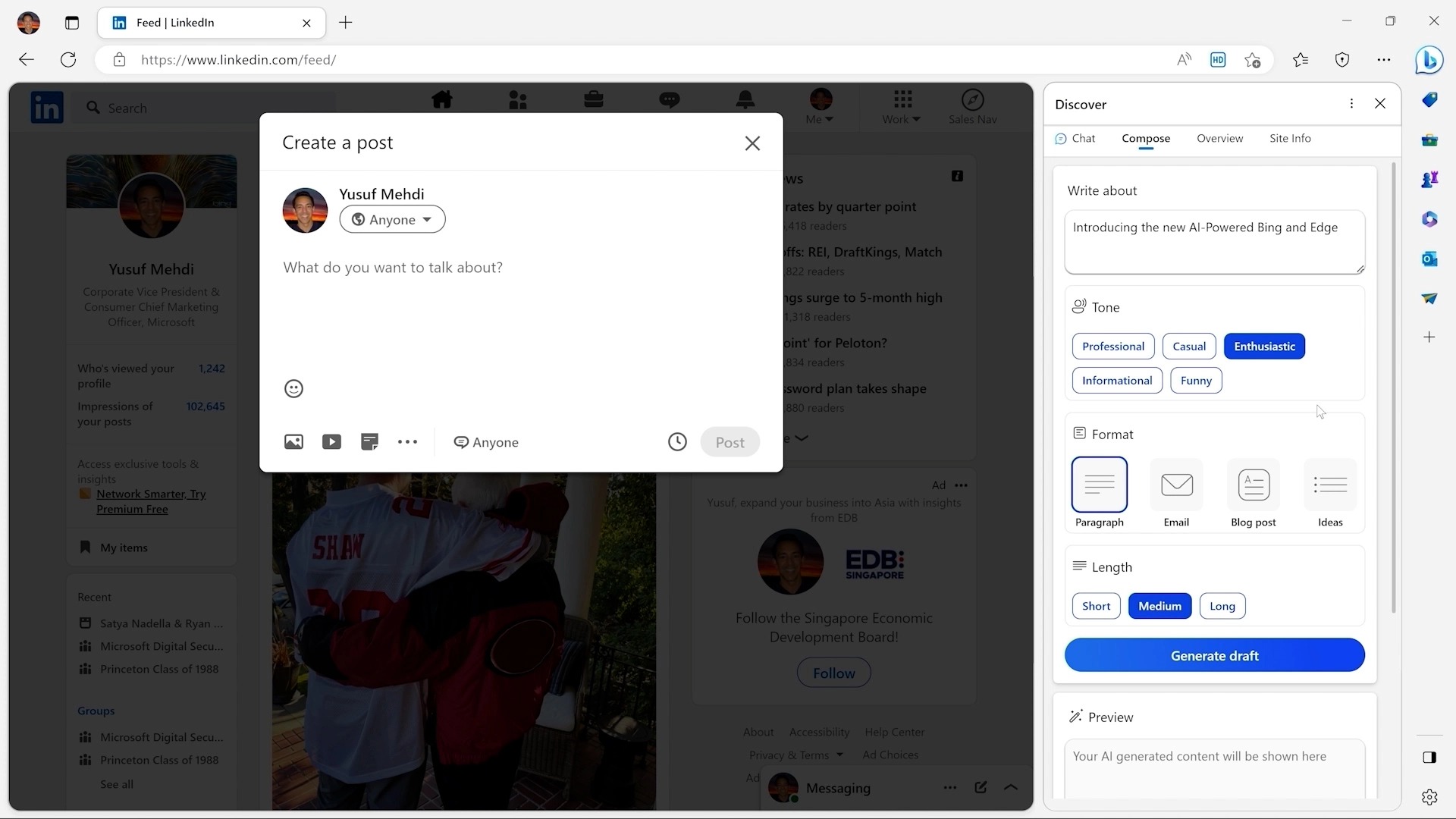
Image Source
With Bing Image Creator, simply type a brief image description of what you want to create, and you’ll get a custom image to use. It uses OpenAI’s DALL-E, and the recommended prompt format is adjective + noun + verb + style, and it’s accessible in creative mode.
Pro Tip
You can get even more use out of the tool using Microsoft Edge Sidebar because it recognizes the web pages you’re on and helps you create content without navigating elsewhere.
7. Ahrefs
Price: $99/month (lite) -$999/month (Enterprise)
Ahrefs uses data from Google and other search engines to show you how your web pages rank for certain keywords. You can also query words or phrases to see how people look them up on search engines so you can develop an SEO strategy to meet consumer needs.
To give you more of an idea of how the software works, here’s a demo that walks you through how to do keyword research with Ahrefs:
If you’d like to better your keyword research strategies, but can’t afford something as intuitive as Ahrefs, you can also check out these tools which similarly leverage AI algorithms to help marketers identify search opportunities.
Pro Tip
Use Ahrefs’ Content Explorer tool to uncover content that generates a lot of social shares. And, if a specific social media platform is important to you — such as Twitter, you can filter shares on that specific site. In addition, you can analyze any page’s social shares over time.
8. Buffer
Price: Price: Free; or $6/month (one channel) – $120/month (10 channels)
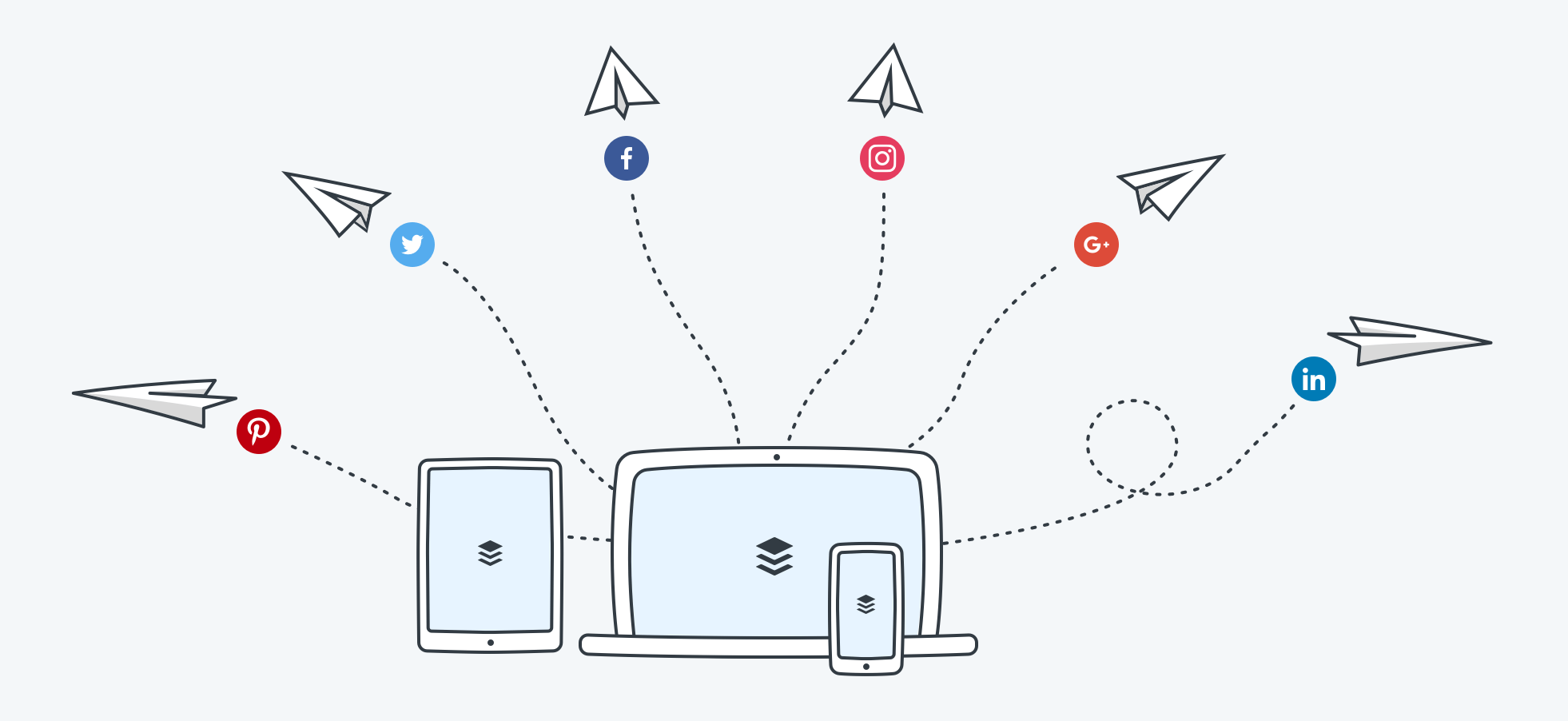 Image Source
Image Source
If you’re a social media marketer, AI tools can take your work to the next level in a fraction of the time.
Buffer is a social media management software offering a range of tools to publish, track, and measure your social media content. For instance, you can maximize engagement by scheduling posts at the most optimal time of day, when your audience is most active.
Pro Tip
For many social media marketers, creating a steady stream of amazing content is challenging. With Buffer’s Calendar tool, you can schedule content months ahead, identify any content gaps, and hone in on certain holidays.
9. Mailchimp
Price: Price: Free; or $13/month – $350/month
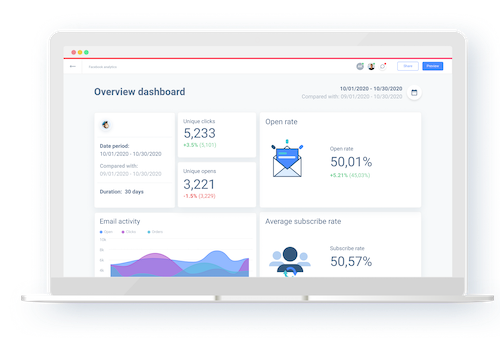
Image Source
Mailchimp is a popular email marketing software that lets you create campaigns and build automated workflows. Depending on your plan, you can also access advanced audience insights and a library of email templates.
Its content optimizer benchmarks your email content among other emails and uses AI to give you data-driven advice to improve performance.
Pro Tip
Use the Customer Journey Builder to automate marketing workflows for your contacts. From simple to highly complex, these journey maps can contain multiple starting points, branches, and unique actions — guaranteeing each of your contacts has a personalized experience.
10.Jasper
Price: Starts at $24/month
Jasper is a high-quality AI assistant that can help generate multiple types of content like blog posts and product descriptions, and the image generator helps you create the best image to match your needs.
Pro Tip
Jasper has a Chrome extension that you can use to ideate and create marketing content within the apps you already use.
Once you choose an AI tool, how can you implement it?
How to Implement AI on a Budget [3 Steps]
1. Determine where AI tools could help you eliminate costs.
At some point, you’ll need to spend money to implement AI. But, how you structure an AI pilot project can help you defray some of the costs.
Although AI, when done right, can increase revenue and reduce costs, you’ll still want to start with a cost-reduction pilot before a revenue-increasing experiment.
A cost-reduction pilot aims to improve (or streamline) processes you already have in place. A revenue-generating pilot, on the other hand, might require new processes — which could ultimately cost more time and money.
To kickstart your cost-reduction pilot, first identify time-intensive or repetitive tasks that hold you — or your team — back from high-quality projects in your organization.
.png?width=900&name=AI%20Tools%20(1).png)
Start by making a list of your recurring responsibilities. Track everything you do every week or month, and list the amount of time you spend on each activity. Chances are, there are a ton of tasks that take way too much time each month. It’s likely they’re also pretty data-driven, too.
Next, explore vendors who have created more intelligent ways to do the tasks that are blocking your team.
For example, you might discover that tagging images on your website takes up too much time. AI software can probably free you up from doing that task. Or, you might spend hours each week managing paid advertising. AI can help there, too.
In fact, there are dozens of ways you can apply AI to immediately free up team time and resources. And, depending on the cost reductions, these pilots may pay for themselves.
Click on the playlist above or here to listen to The Business of AI, featuring shows in the HubSpot Podcast Network.
2. Research tools that work out of the box.
A handful of small to medium-sized businesses might worry about blowing their budgets when they hear the words, “artificial intelligence” because — at the moment — many AI solutions are built for corporate enterprise.
The truth is, many AI tools need access to quality data at scale to produce results. Enterprises are often the only source of this data. But this doesn’t mean you need to count out AI as a marketer for a smaller business.
In fact, a number of AI tools are affordable, work out of the box, and cut time on basic marketing tasks (like the ones listed above).
Additionally, you might not know it, but you might already be using popular office tools that are powered by AI.
3. Ask these questions before investing in an AI product.
There are some vendors out there that claim to be AI but aren’t. If you don’t understand what to look for, you could waste time and money on lackluster solutions.
That’s why we encourage every marketer to establish a baseline knowledge of AI. (Our beginner’s guide will cut down your learning curve.)
Aside from familiarizing yourself with the technology, you also need to ask smart questions of AI vendors about the tools they sell.
Start with questions like:
- How does ____ use AI today?
- What AI capabilities are on the product roadmap?
- What type of data do I need for the solution to work?
- Is there any type of minimum size dataset I need to use the solution? (i.e. a certain number of emails sent, visitors to the site, etc.)
- What kinds of in-house capabilities do I need to use and maintain the solution?: Can anyone use it? Do I need dedicated data scientists, machine learning experts?
- My top use cases for AI are A, B, C, etc. Can ___ help?
Curiosity may have killed the cat. But it also saves marketers tons of money when buying new technology. So, don’t be afraid to ask questions and do deep research on each product you’re considering before you invest.
What AI tools are marketers currently using? [Research]
With all that being said, what tools are marketers currently using in their processes?
In our recent State of AI survey, we asked 1350+ business professionals about their use of AI/automation.
Here are some key takeaways.
The most popular generative AI tools among marketers who use AI are chatbots (68%), visual AI tools (57%), and text generation tools (56%).
When creating marketing content, marketers using AI say that Chatbots (e.g., ChatGPT, Bing AI, Google Bard) are the most effective tool. And once it becomes publicly available, marketers see themselves using and are most likely to use ChatGPT for work-related tasks.
Marketers using AI to create marketing content say they most often use generative AI to get ideas/inspiration (33%), write copy (28%), and create images (26%).
The most popular text generation tools among marketers who use AI are Compose AI (30%), Jasper (27%), and Copy.AI (26%). And the type of content they most often use generative AI to write are emails (38%), social media posts (36%), and product descriptions and blog posts (both 30%).
Familiarizing Yourself With AI
Artificial intelligence can sound intimidating and expensive but, truth is, it’s only going to get more and more prominent in our workplaces.
Ultimately, the best strategy for vetting AI products, tools, and opportunities that may come your way in the future is to research credible sources and ask the right questions about the software you’re considering.
If you’re looking to take the next step with technology implementation, check out HubSpot Academy’s latest course, “Artificial Intelligence and Machine Learning in Marketing.” The course gives an introduction to AI and machine learning while also walking you through how to implement it in your company’s marketing department.

Credit: Source link










